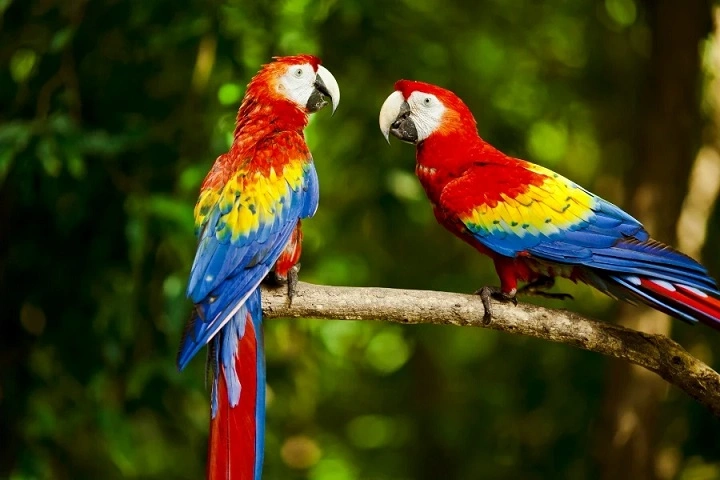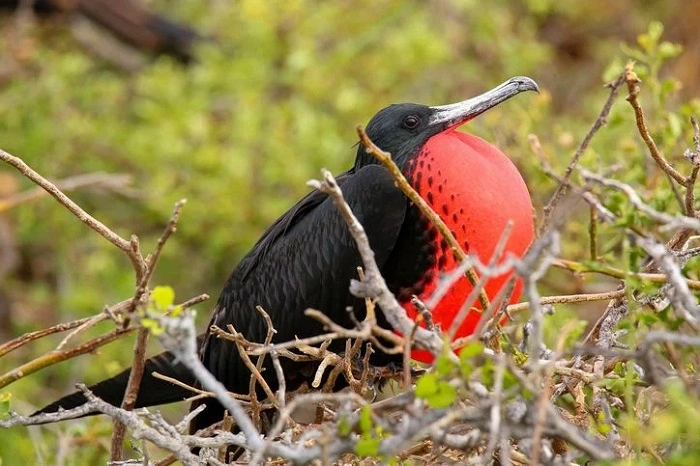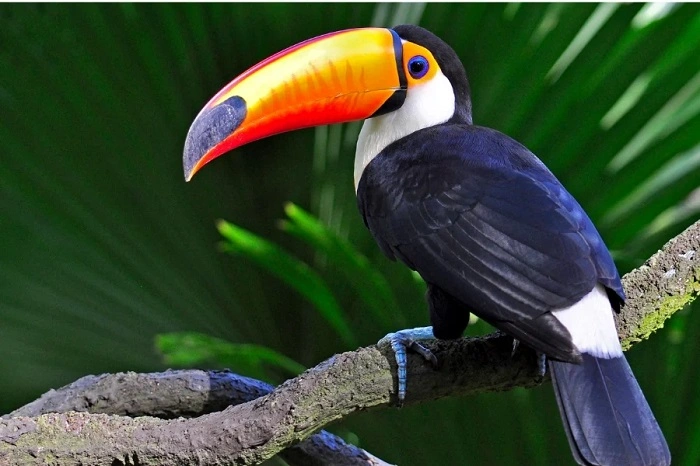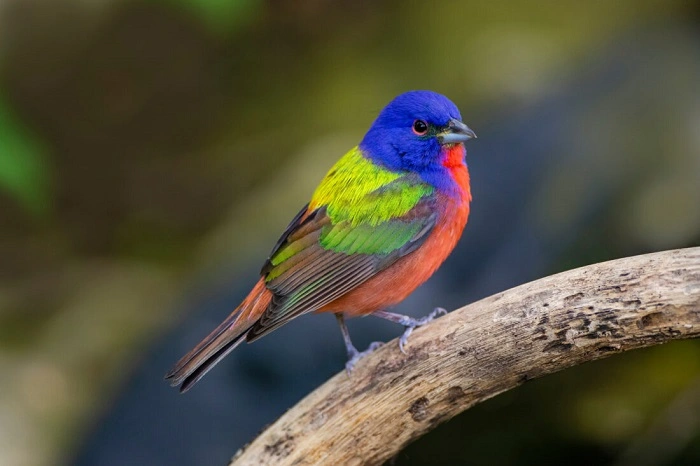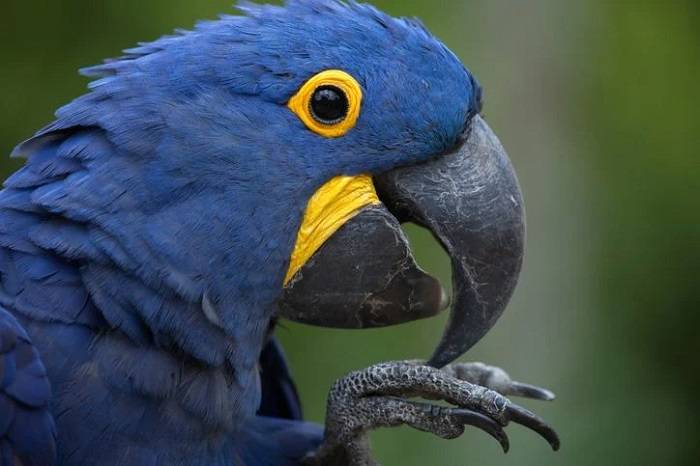South America is one of the most biodiverse regions in the world, and it’s home to an incredible variety of bird species. From the dense rainforests of the Amazon to the high-altitude regions of the Andes, the continent’s vast array of ecosystems supports over 3,000 species of birds, many of which are found nowhere else on Earth. This rich diversity has made South America a birdwatcher’s paradise, offering some of the most vibrant, unique, and awe-inspiring birds. In this blog post, we will explore the fascinating world of South American birds, highlighting some of the most iconic and spectacular species, their habitats, and what makes them so special.
Why South America is a Birdwatcher’s Paradise
The Biodiversity of South America
South America’s vast and varied landscapes make it one of the most important regions for avian biodiversity. The continent is home to a wide range of habitats, including tropical rainforests, savannas, grasslands, wetlands, and mountain ranges. Each of these ecosystems offers a unique environment for birds, with different species adapted to thrive in each one.
From the lowland rainforests of the Amazon Basin to the windswept plains of Patagonia, South America offers habitats that support a staggering variety of birdlife. The continent’s position near the equator, combined with its diverse climates and geographical features, allows it to host an extraordinary array of bird species. Some of the most famous and rare birds in the world can be found in South America, making it an essential destination for bird enthusiasts and conservationists.
The Appeal for Birdwatchers
South American birds are known for their vibrant colors, unique shapes, and complex behaviors. Whether it’s the bright plumage of a toucan or the intricate song of a hummingbird, the avian life in South America is both visually and sonically captivating. Birdwatchers flock to the continent to witness the spectacle of migratory birds passing through, observe rare species, and experience the thrill of spotting elusive birds in their natural habitats.
Notable Birding Destinations in South America
- The Amazon Rainforest: Home to countless species, including toucans, parrots, and harpy eagles.
- The Andes Mountains: Host to high-altitude birds such as Andean condors and various species of hummingbirds.
- Pantanal: A vast wetland that offers an excellent opportunity to observe waterfowl and shorebirds.
- Iguaçu Falls: Known for its lush vegetation and bird species such as swallows, parrots, and toucans.
Iconic Birds of South America
Macaws
Macaws are some of the most stunning and recognizable birds in South America. With their vibrant plumage and large size, they are often considered the “jewels” of the bird world. There are several species of macaws, with the Blue-and-Gold Macaw and Scarlet Macaw being the most famous.
- Habitat: Macaws are typically found in the rainforests of Central and South America, particularly in countries like Brazil, Peru, and Colombia.
- Diet: They are primarily frugivores, eating fruits, nuts, and seeds.
- Threat Status: Many species of macaws are threatened by habitat destruction and illegal trapping for the pet trade, making conservation efforts crucial.
Harpy Eagle
The Harpy Eagle is one of the largest and most powerful eagles in the world, easily identifiable by its striking feathered crest and large size. These birds of prey are known for their incredible hunting skills, with powerful talons that can rival the size of a human hand.
- Habitat: Found in the rainforests of Central and South America, from southern Mexico to Brazil.
- Diet: They prey on monkeys, sloths, and other medium-sized mammals.
- Threat Status: The harpy eagle is classified as vulnerable due to deforestation and hunting.
Andean Condor
The Andean Condor is one of the largest flying birds in the world, with a wingspan that can exceed 10 feet. These majestic birds are often seen soaring high in the Andes Mountains, riding thermal updrafts.
- Habitat: They are found in mountainous regions from Colombia and Venezuela down to Argentina and Chile.
- Diet: As scavengers, Andean condors feed on carrion and help to maintain the health of their ecosystem.
- Conservation: While not currently endangered, the Andean condor faces threats from habitat loss and poisoning.
Toco Toucan
Known for its enormous and brightly colored beak, the Toco Toucan is perhaps the most iconic toucan species in South America. Their striking appearance and playful nature make them a favorite among birdwatchers and photographers.
- Habitat: Toco toucans are native to the tropical and subtropical rainforests of South America, especially in Brazil.
- Diet: They primarily eat fruits, nuts, seeds, and small insects.
- Fun Fact: Despite their large beaks, toucans have a surprisingly light body, with their beaks serving to help regulate body temperature as well as forage.
Hummingbirds
South America is home to some of the world’s most beautiful and diverse hummingbird species, including the Andean Hillstar and Sword-billed Hummingbird. These tiny, iridescent birds are known for their incredible ability to hover in mid-air by rapidly flapping their wings.
- Habitat: Hummingbirds can be found in a variety of environments, from the high-altitude regions of the Andes to the lush lowland forests of the Amazon.
- Diet: Hummingbirds primarily feed on nectar, using their long bills to access flowers and pollinate them in the process.
- Conservation: Some species of hummingbirds are endangered due to habitat destruction and the loss of nectar-rich flowers.
Flamingos
South America’s wetlands are home to several species of flamingos, with the Chilean Flamingo being one of the most common. These graceful, pink birds are often seen standing in shallow water, feeding on algae and small crustaceans.
- Habitat: Flamingos can be found in the salt flats and lakes of the Andes and Patagonia region.
- Diet: Their distinctive pink coloration comes from the carotenoid pigments in the algae and crustaceans they consume.
- Conservation: While some species are common, others, like the Andean flamingo, are considered near threatened due to the loss of wetland habitats.
Unique Features of South American Birds
Bright Plumage
South American birds are famous for their vivid and varied plumage. From the vibrant reds and blues of macaws to the brilliant greens and yellows of parrots, these birds are some of the most visually striking in the world. Their colors are not only a beautiful feature but also serve important purposes, such as attracting mates or camouflaging in dense forests.
Mimicry and Intelligence
Birds such as parrots and mynahs in South America are known for their ability to mimic sounds, including human speech. This high level of intelligence is not only fascinating but also allows these birds to form deeper social connections with humans and other animals. Their ability to communicate and solve problems is part of what makes them so captivating to birdwatchers and pet owners.
Adaptability
Many South American birds have evolved to thrive in a variety of habitats, from high-altitude regions like the Andes to lowland tropical forests. This adaptability is key to their survival in a continent with such diverse and often challenging environments.
Birdwatching in South America
Best Locations for Birdwatching
South America offers some of the best birdwatching opportunities in the world, with a variety of regions known for their bird diversity.
- The Amazon Rainforest: This region is home to an incredibly rich diversity of bird species, including toucans, parrots, and hawks. The Amazon is a prime location for spotting some of the most colorful and rare birds.
- The Andes Mountains: Home to high-altitude species like the Andean Condor and various species of hummingbirds, the Andes offer breathtaking views and incredible bird watching opportunities.
- The Pantanal: This vast wetland in Brazil is one of the largest in the world and is home to species like the Jabiru stork and the hyacinth macaw.
- Galápagos Islands: Although technically part of Ecuador, the Galápagos is an essential bird watching destination. Species like the famous Galápagos finches and the Blue-footed Booby are native to these islands.
FAQs About South American Birds
What are some of the most common bird species in South America?
Some of the most common birds include parrots, toucans, hummingbirds, macaws, and flamingos. These species are widely recognized for their vibrant colors and unique features.
How can I go birdwatching in South America?
To go birdwatching in South America, it’s best to visit bird-rich areas such as the Amazon Rainforest, the Andes, or the Pantanal. Consider joining guided birdwatching tours to maximize your experience and spot rare species.
Are any South American birds endangered?
Yes, many South American birds, including the Andean flamingo and the hyacinth macaw, are endangered due to habitat destruction and illegal hunting. Conservation efforts are ongoing to protect these species.
Why are South American birds so colorful?
The vibrant colors of South American birds are due to the natural pigments in their feathers. These colors often serve as signals for mating, socializing, and camouflage in their native environments.
Can I keep a South American bird as a pet?
Many South American birds, such as parrots and macaws, are popular pets due to their intelligence and ability to mimic human speech. However, it’s important to consider their needs for social interaction, space, and proper care before adopting one.
South American birds are among the most diverse and spectacular creatures on the planet, with their vibrant colors, unique behaviors, and wide range of species. Whether you’re a birdwatching enthusiast or simply someone fascinated by the beauty of nature, the birds of South America offer endless opportunities for discovery and admiration. From the colorful toucans and parrots to the majestic Andean condor, these birds are not just beautiful—they are an integral part of the ecosystems that make South America one of the most biodiverse regions on Earth.


